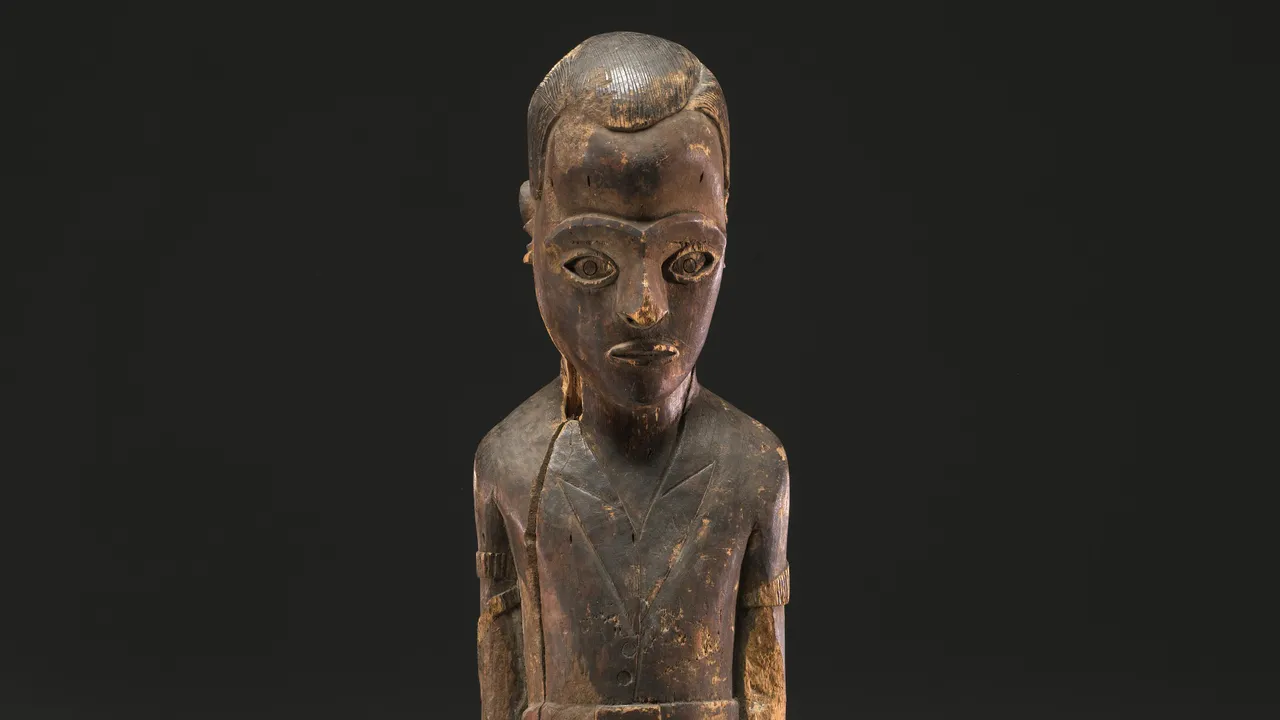
Ancestral sculpture Balot temporarily returned to place of origin
Historic step forwards for artist collective Cercle d’Art des Travailleurs de Plantation Congolaise (CATPC) and Lusanga (DRC), as Virginia Museum of Fine Arts confirms the loan of the sculpture ‘Balot’, a carved wood ancestral power-figure made in 1931. CATPC requested the temporary loan of Balot in anticipation of the exhibition in the 2024 Dutch National participation at the International Art Exhibition of La Biennale di Venezia in collaboration with Dutch artist Renzo Martens and curator Hicham Khalidi. The sculpture is expected to be on display in Lusanga to the public from April 20 to November 24, 2024, parallel to the Biennale di Venezia.
The sculpture has been part of the VMFA collection since 2015. The statue was created after the Pende Revolt of 1931 by a Kwilu Pende artist and was initially intended as a power object to harness Belgian Colonial Officer Maximilian Balot’s angry spirit. It was used as a force for protection against the plantation regime. For CATPC, given the current conditions on the former Unilever plantations and the strategies of resistance of the communities today, the return of this sculpture, even on a temporary basis, is of great significance.
It has long been CATPC’s wish and that of their community that the ancestral sculpture will travel back to Lusanga to be ritually reunited with the region’s notables, traditional chiefs, current and former plantation workers, children, women, men and other Earth-beings. CATPC believes in restoring balance and correcting past injustices once the sculpture held sacred to their community is displayed at the White Cube museum in Lusanga. It will allow their community to physically and historically reconnect with their history and their resistance, to recover the sculpture’s meaning and purpose and to express “a shared heritage for all humanity that traverses the world” (Ced’art Tamasala, CATPC).
Ced’art Tamasala on behalf of CATPC: “We at CATPC are part of a new generation of plantation workers that is seeking, proposing and trying to find sustainable answers to the long-standing questions that are the key to the liberation of plantations. The return of Balot focusses our energy and strengthens our cause. Ultimately, by restoring the balance and correcting past injustices, the return of Balot will allow us to continue to buy back the land that was taken from us by colonial forces, it will enable us to abolish forced and destructive monoculture and to plant, regenerate and nourish back into existence our sacred forests.”
Eelco van der Lingen, director of the Mondriaan Fund and commissioner: “It’s great that the Virginia Museum of Fine Arts is committed to really engage with the meaning of the sculpture and with the value it represents for the people from where it originates. I am delighted the loan is agreed on for CATPC and I trust that this narrative will be given a proper podium at La Biennale di Venezia in the presentation by CATPC, Renzo Martens and Hicham Khalidi.”
La Biennale di Venezia
For the 60th edition of the International Art Exhibitions of La Biennale di Venezia CATPC will present new works in the Dutch National participation in collaboration with artist Renzo Martens and curator Hicham Khalidi. The forthcoming exhibition is but one component of their ongoing commitment for the plantation of Lusanga to be freed, regenerated and transformed back into sacred forests, as well as their commitment to a greater project of spiritual, ethical and economic reckoning. CATPC is working on a series of new artworks for the presentation in Venice and Lusanga. In addition, the unreleased performance film ‘The Judgement of the White Cube’ will also have a place in the exhibition. The exhibition will be on display from 20 April 2024 until 24 November 2024 at the Rietveld Pavilion in Venice and simultaneously in the White Cube in Lusanga (DRC).
